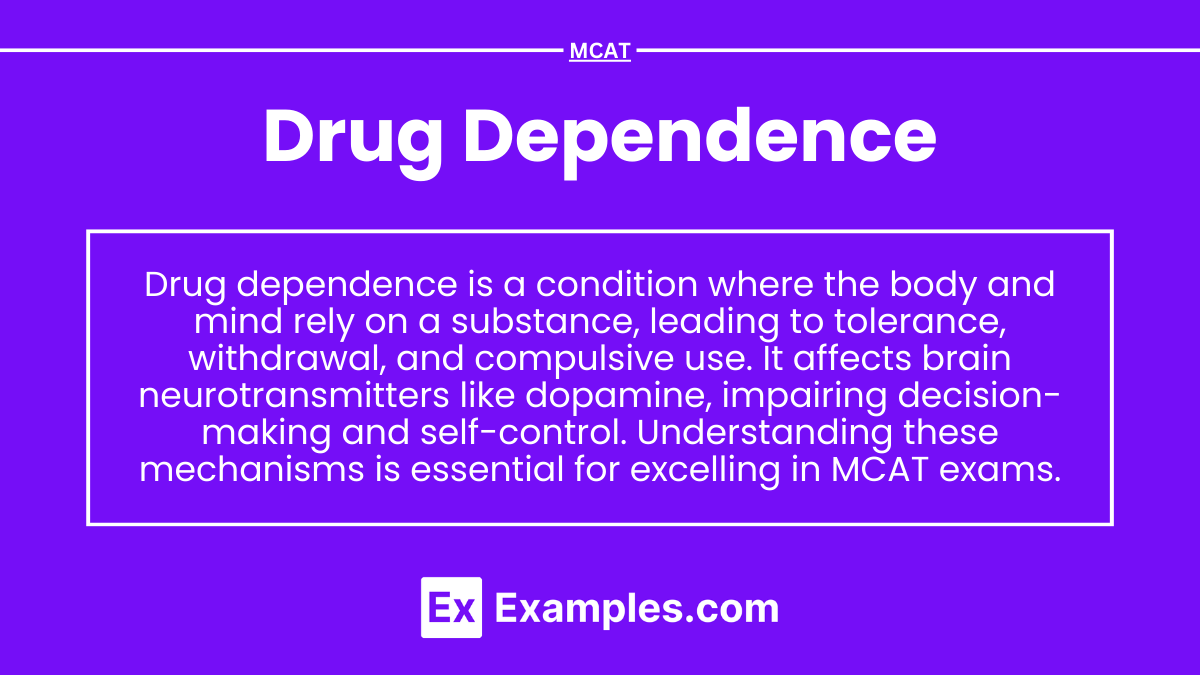Preparing for the MCAT necessitates a profound comprehension of drug dependence, essential for mastering Organ Systems. Understanding the mechanisms of addiction, tolerance, and withdrawal, as well as brain neurotransmitter functions, equips you with crucial insights into substance use disorders, vital for excelling on the MCAT and understanding complex neural functions.
Learning Objective
In studying “Drug Dependence” for the MCAT, you should develop an understanding of the physiological and psychological mechanisms of addiction, including the role of neurotransmitters like dopamine and the brain’s reward system. Explore the concepts of tolerance, withdrawal, and the impact of drugs on neuronal pathways. Evaluate how drug dependence affects decision-making, emotional regulation, and compulsive behavior. Additionally, understand how these changes contribute to long-term brain adaptations and mental health disorders. Apply this knowledge to interpreting case studies and solving MCAT practice questions on the biological and behavioral aspects of drug dependence.
Types of Dependence
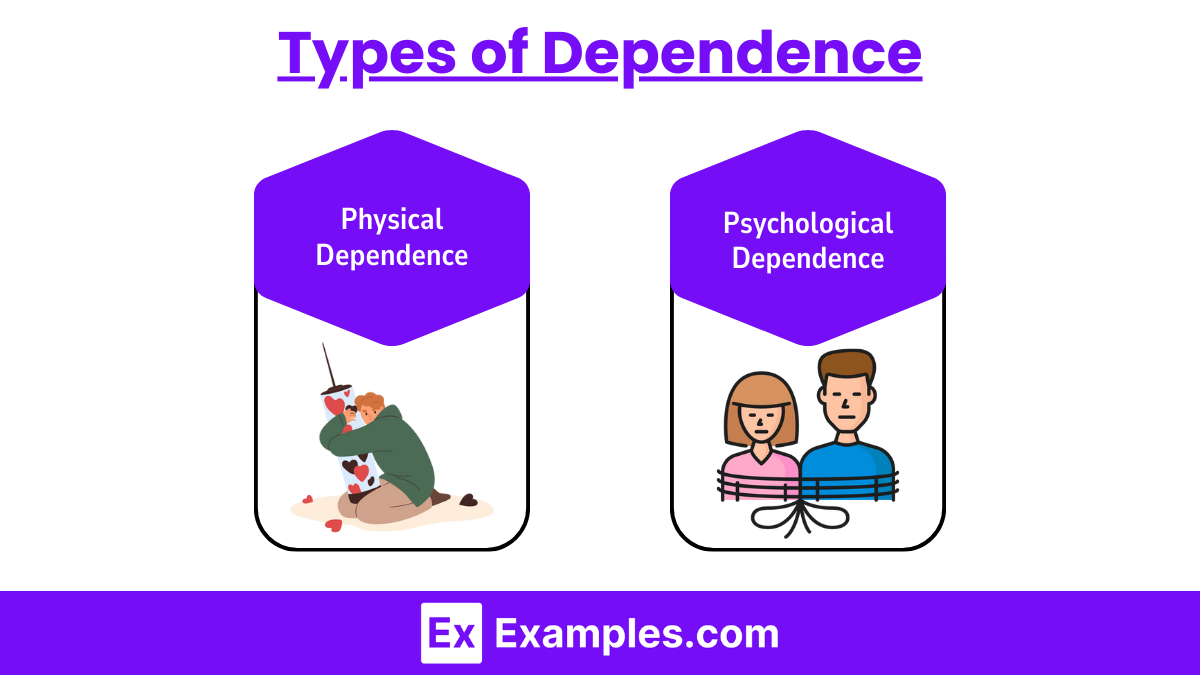
- Physical Dependence
- Physical dependence occurs when the body adapts to a drug, leading to withdrawal symptoms upon its absence. This dependency often requires the body to have the drug to avoid physical symptoms like shaking, nausea, or pain.
- Example: A person dependent on opioids might feel intense physical discomfort or flu-like symptoms if they stop taking the drug suddenly.
- Psychological Dependence
- Psychological dependence involves emotional and mental attachment to the drug. Individuals might feel they need the drug to function emotionally or socially, which leads to cravings and anxiety without it.
- Example: A person might feel anxious or depressed when they cannot take the drug they are psychologically dependent on, even if they don’t experience physical withdrawal symptoms.
Stages of Drug Dependence

- Initial Use
- Involves experimental use where the individual tries a substance for curiosity, peer pressure, or recreational reasons.
- Regular Use
- The user may start taking the drug more regularly, increasing the frequency of usage but often still in social or specific contexts.
- Risky Use
- At this stage, the use becomes more regular, and the person may start using in situations where it can lead to risky consequences, such as while driving or in high doses.
- Dependence
- The individual develops a tolerance and experiences withdrawal symptoms when not using the drug, showing signs of both physical and psychological dependence.
- Addiction
- In addiction, the person loses control over their use, experiencing intense cravings and taking the substance even when it causes harm.
Mechanisms of Drug Dependence
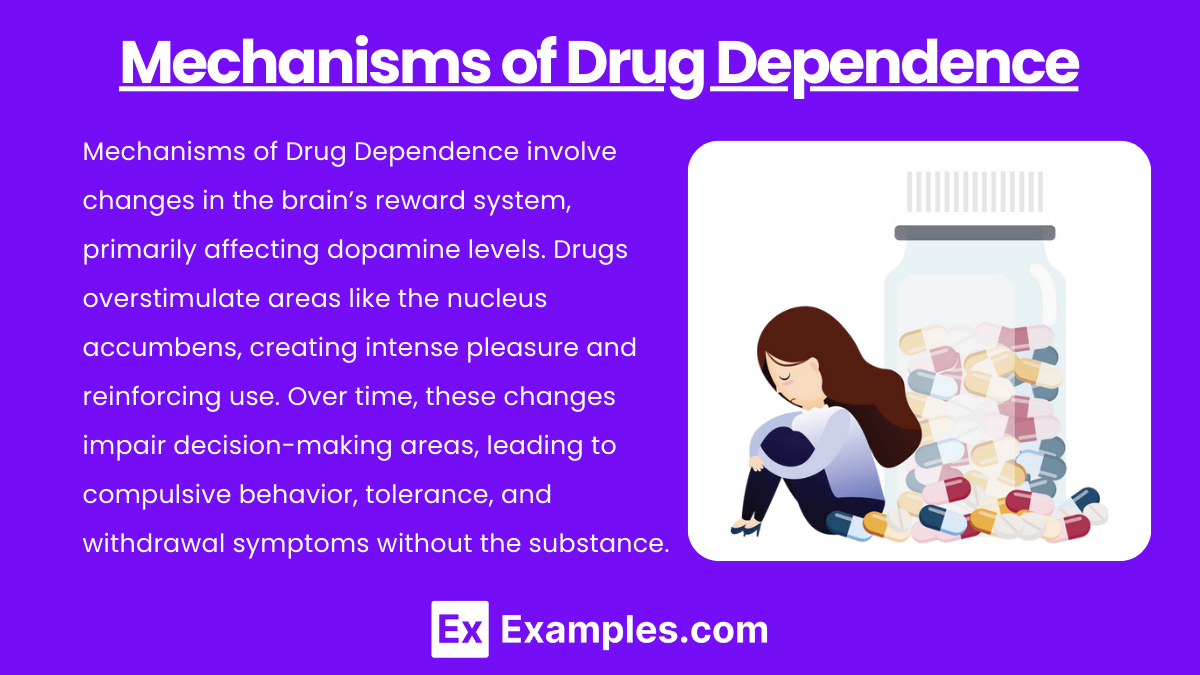
Drug dependence often involves changes in the brain’s reward system, particularly in the areas that control pleasure and motivation. Some key neurotransmitters and brain regions involved are:
- Dopamine: This neurotransmitter plays a major role in reward and pleasure experiences. Drugs often cause a spike in dopamine levels, reinforcing the behavior.
- Nucleus Accumbens: Known as the brain’s “reward center,” this region is activated by pleasurable experiences. Drugs overstimulate this center, leading to dependence.
- Amygdala and Prefrontal Cortex: The amygdala associates emotions with drug use, while the prefrontal cortex governs decision-making and self-control. Repeated drug use can impair these areas, leading to compulsive behavior.
Risk Factors for Drug Dependence
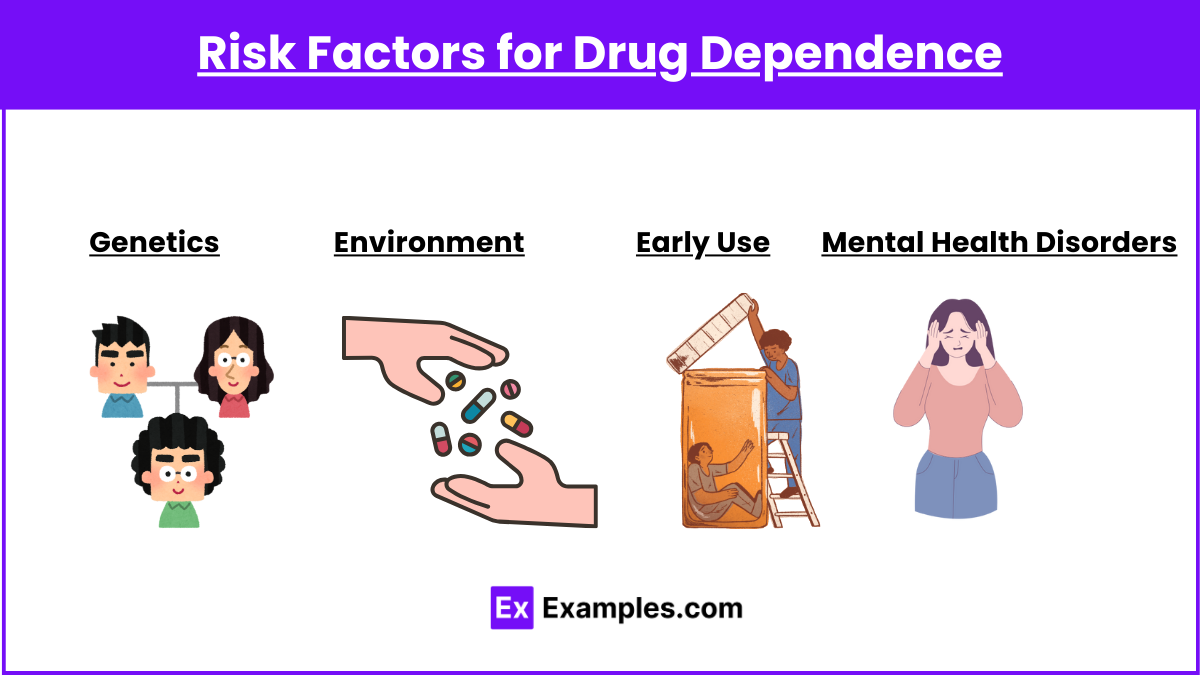
Several factors can influence the risk of developing drug dependence, including:
- Genetics: Family history of addiction may increase the likelihood of dependence.
- Mental Health Disorders: Conditions such as depression, anxiety, or PTSD are common risk factors.
- Environment: Exposure to drug use in one’s surroundings, especially during formative years, can increase the risk.
- Early Use: Starting drug use at a younger age often leads to faster development of dependence.
Effects of Drug Dependence
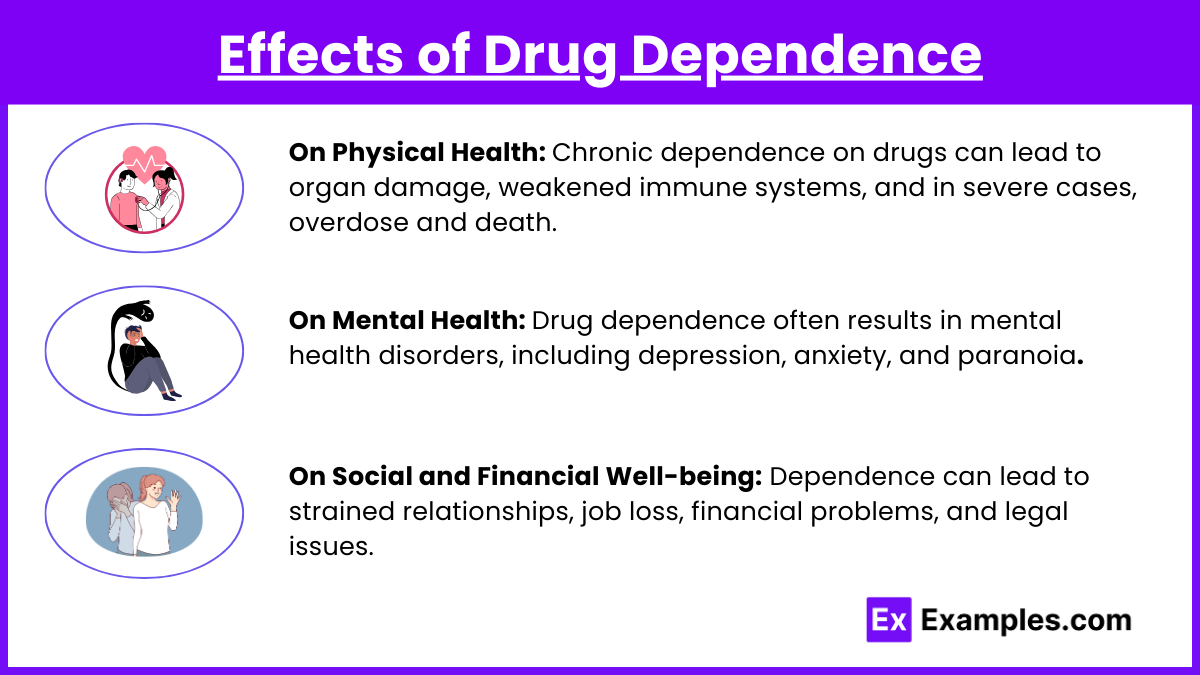
- On Physical Health: Chronic dependence on drugs can lead to organ damage, weakened immune systems, and in severe cases, overdose and death.
- On Mental Health: Drug dependence often results in mental health disorders, including depression, anxiety, and paranoia.
- On Social and Financial Well-being: Dependence can lead to strained relationships, job loss, financial problems, and legal issues.
Examples
Example 1: Neurotransmitter Imbalance in Drug Dependence
- Chronic drug use overstimulates dopamine pathways in the brain’s reward system.
- Repeated stimulation causes the brain to adapt, reducing dopamine sensitivity, leading to tolerance and the need for higher doses to achieve the same effect.
Example 2: Role of Dopamine in Addiction
- Dopamine plays a central role in reinforcing drug-seeking behavior.
- Drugs like cocaine increase dopamine levels, creating feelings of euphoria. Over time, the brain relies on the drug to maintain normal dopamine function, leading to dependence.
Example 3: Effects of Withdrawal Symptoms
- When drug use stops, individuals experience withdrawal symptoms like anxiety, irritability, and physical pain.
- These symptoms result from the brain’s altered neurochemistry, pushing the person to seek the drug again to avoid discomfort.
Example 4: Psychological Dependence and Cravings
- Psychological dependence can occur without physical withdrawal.
- Users feel strong cravings and emotional distress when not using the drug, often leading to relapse even after periods of sobriety.
Example 5: Impact of Drug Dependence on Decision-Making
- Chronic drug use impairs the prefrontal cortex, which governs decision-making and self-control.
- This leads to compulsive drug-seeking behavior, even when the individual is aware of the harmful consequences.
Practice Questions
Question 1: What neurotransmitter is primarily involved in reinforcing drug-seeking behavior in drug dependence?
A) Serotonin
B) GABA
C) Dopamine
D) Glutamate
Answer: C) Dopamine
Explanation: Dopamine is crucial in the brain’s reward system. It reinforces drug-seeking behavior by creating pleasurable feelings, leading to dependence with repeated drug use.
Question 2: Which of the following is a common withdrawal symptom experienced by individuals with drug dependence?
A) Increased dopamine levels
B) Euphoria
C) Anxiety and irritability
D) Enhanced focus
Answer: C) Anxiety and irritability
Explanation: Withdrawal symptoms such as anxiety and irritability occur when the brain adjusts to functioning without the drug, as it has become dependent on it for normal neurochemical balance.
Question 3: Which brain region is most affected by chronic drug use, impairing decision-making and self-control?
A) Amygdala
B) Hippocampus
C) Prefrontal cortex
D) Brainstem
Answer: C) Prefrontal cortex
Explanation: The prefrontal cortex is involved in decision-making, impulse control, and self-regulation. Chronic drug use impairs its function, leading to compulsive behaviors and poor decision-making.

